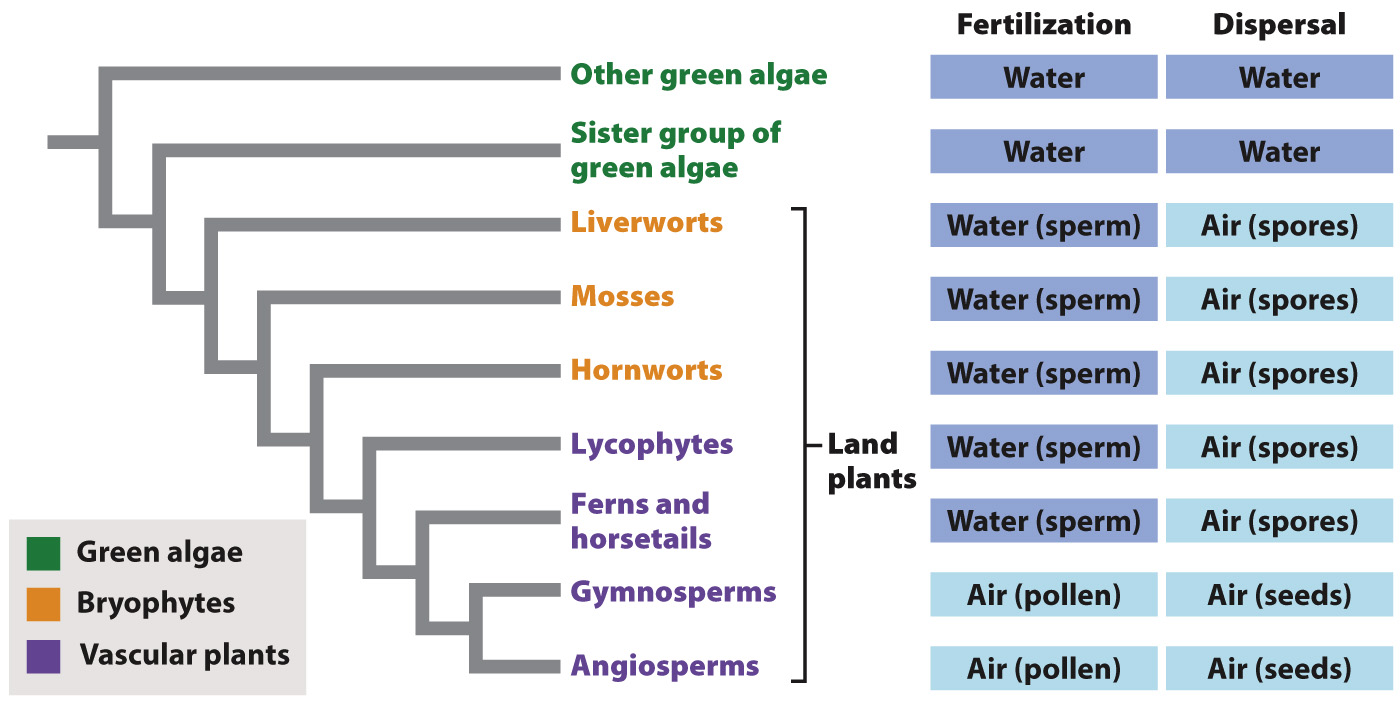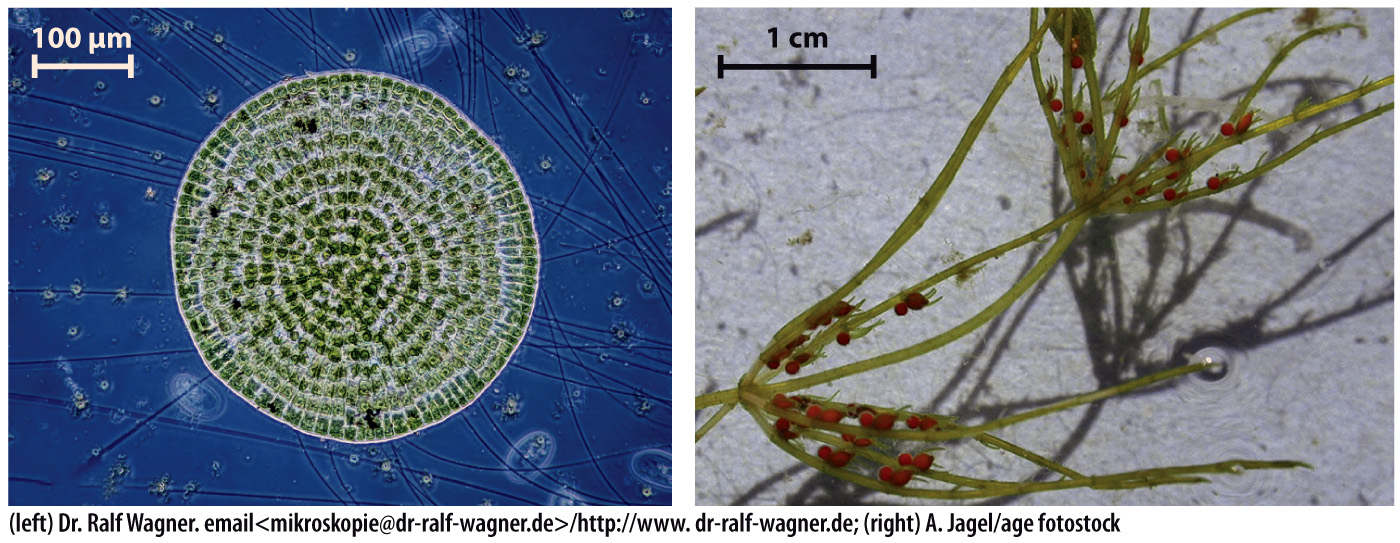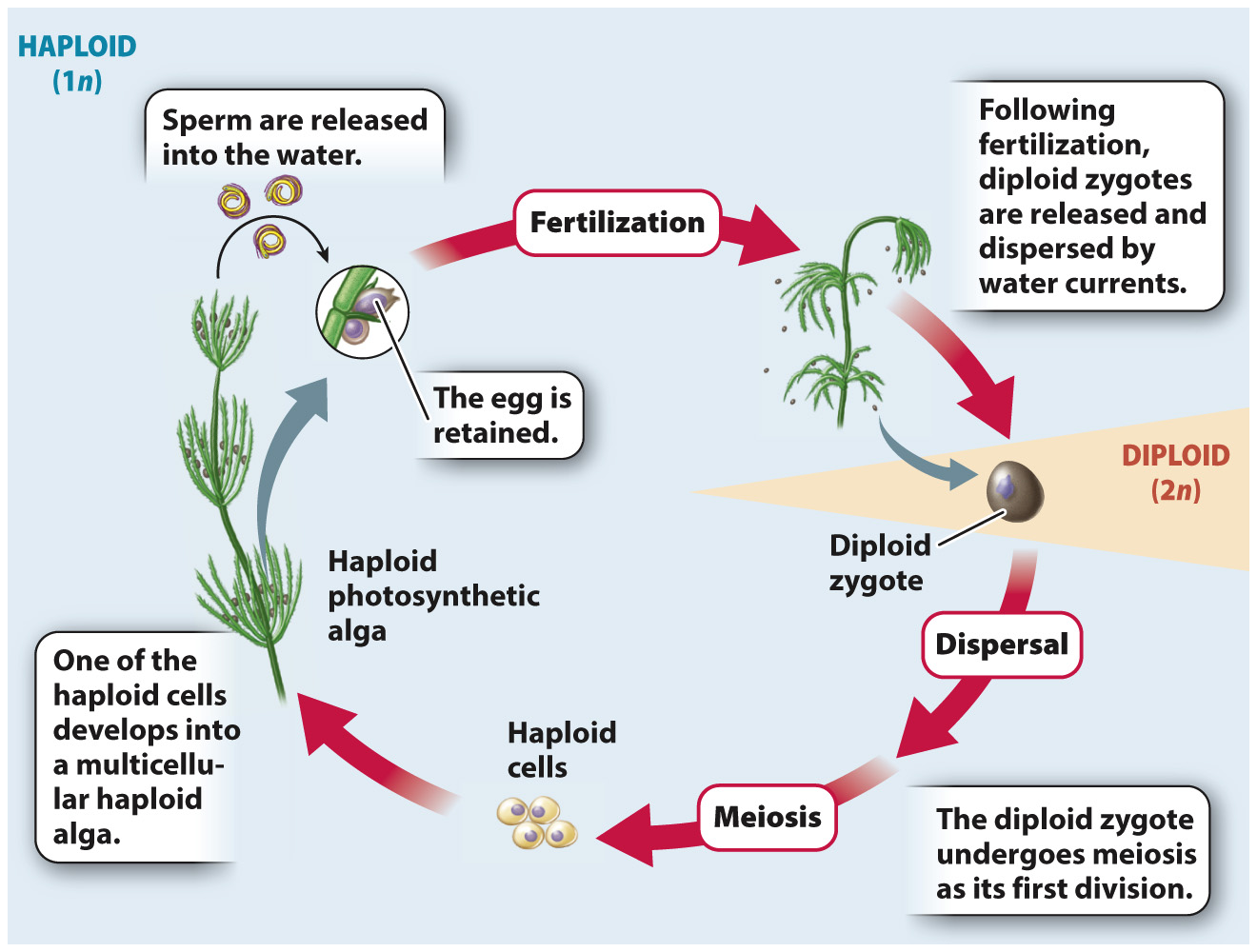The algal sister groups of land plants have one multicellular generation in their life cycle.
Molecular sequence comparisons identify three groups of green algae as being closely related to land plants (Fig. 30.1). These close relatives include Coleochaetales and Charales, two groups of green algae that share a number of features with plants, including cellular structures like plasmodesmata and developmental features like apical growth (i.e, at the tip). Another group of green algae, the microscopic Zygnematales, may also be closely related to plants, but this group has gone down a distinct evolutionary path and so exhibits fewer plant-


In animals, the multicellular body consists of diploid (2n) cells. Coleochaete and Chara have a multicellular body as well, shown in Fig. 30.2, but it consists entirely of haploid (1n) cells. In animals, haploid gametes are formed by meiosis. In Coleochaete and Chara, haploid eggs and sperm are formed instead by mitosis. The egg is retained within the female reproductive organ and the sperm are released into the water (Fig. 30.3). Fertilization results when one egg and one sperm fuse to form a diploid zygote. The zygote then undergoes meiosis to produce four haploid cells. These haploid cells can develop into new multicellular (haploid) individuals, and thus they represent the beginning of the next generation. In Coleochaete, the haploid products of meiosis disperse by swimming through the water, propelled by flagella, before settling in a new location. In Chara, the zygotes are carried by water currents until they settle and undergo meiosis.

621
In Chara and Coleochaete, both fertilization and dispersal take place in water. Living along the margins of lakes and streams, however, Chara and Coleochaete are occasionally left high and dry by drought. Their photosynthetic bodies shrivel quickly, but these algae survive because their zygotes form a protective wall that allows the cell inside to tolerate exposure to air. When water once again covers the resting zygotes, they undergo meiosis and the resulting haploid cells escape from their protective coat. This is the condition from which the more complicated life cycles of land plants evolved.